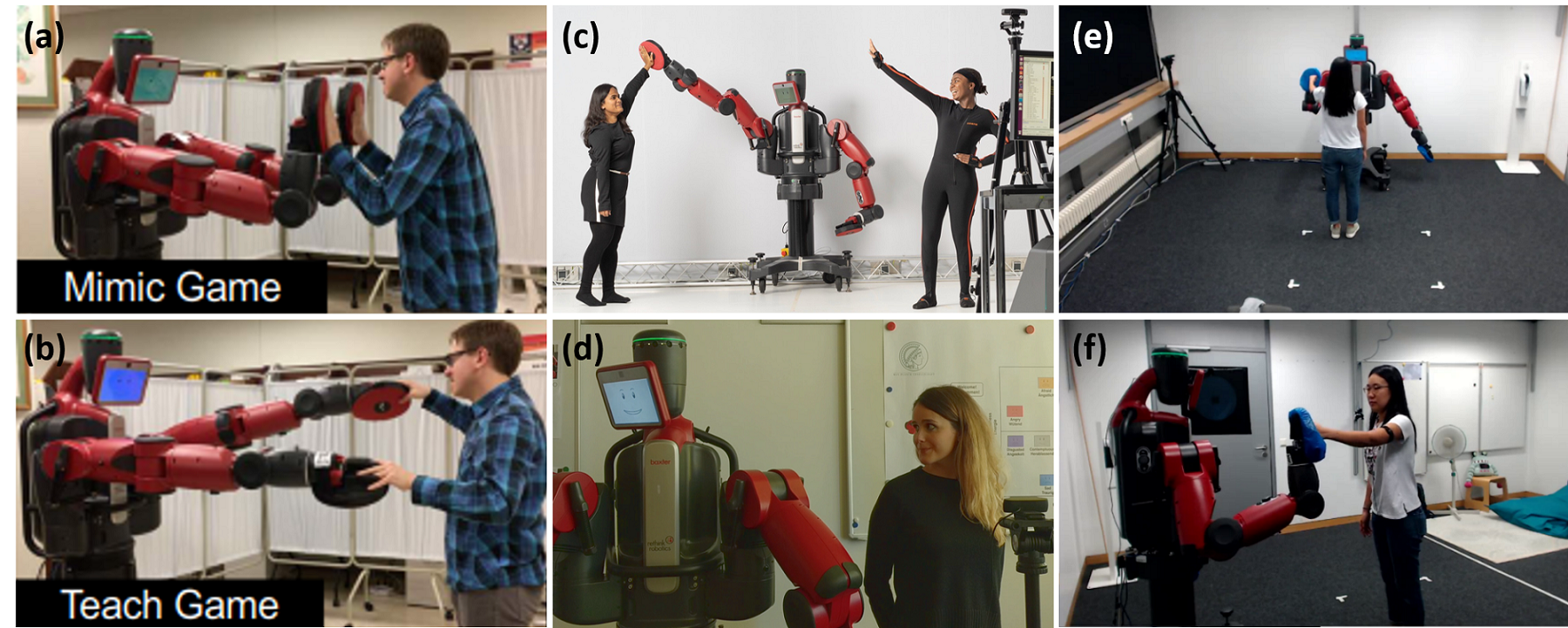Quantifying the Quality of Haptic Interfaces
Shape-Changing Haptic Interfaces
Generating Clear Vibrotactile Cues with Magnets Embedded in a Soft Finger Sheath
Salient Full-Fingertip Haptic Feedback Enabled by Wearable Electrohydraulic Actuation
Cutaneous Electrohydraulic (CUTE) Wearable Devices for Pleasant Broad-Bandwidth Haptic Cues
Modeling Finger-Touchscreen Contact during Electrovibration
Perception of Ultrasonic Friction Pulses
Vibrotactile Playback for Teaching Sensorimotor Skills in Medical Procedures
CAPT Motor: A Two-Phase Ironless Motor Structure
4D Intraoperative Surgical Perception: Anatomical Shape Reconstruction from Multiple Viewpoints
Visual-Inertial Force Estimation in Robotic Surgery
Enhancing Robotic Surgical Training
AiroTouch: Naturalistic Vibrotactile Feedback for Large-Scale Telerobotic Assembly
Optimization-Based Whole-Arm Teleoperation for Natural Human-Robot Interaction
Finger-Surface Contact Mechanics in Diverse Moisture Conditions
Computational Modeling of Finger-Surface Contact
Perceptual Integration of Contact Force Components During Tactile Stimulation
Dynamic Models and Wearable Tactile Devices for the Fingertips
Novel Designs and Rendering Algorithms for Fingertip Haptic Devices
Dimensional Reduction from 3D to 1D for Realistic Vibration Rendering
Prendo: Analyzing Human Grasping Strategies for Visually Occluded Objects
Learning Upper-Limb Exercises from Demonstrations
Minimally Invasive Surgical Training with Multimodal Feedback and Automatic Skill Evaluation
Efficient Large-Area Tactile Sensing for Robot Skin
Haptic Feedback and Autonomous Reflexes for Upper-limb Prostheses
Gait Retraining
Modeling Hand Deformations During Contact
Intraoperative AR Assistance for Robot-Assisted Minimally Invasive Surgery
Immersive VR for Phantom Limb Pain
Visual and Haptic Perception of Real Surfaces
Haptipedia
Gait Propulsion Trainer
TouchTable: A Musical Interface with Haptic Feedback for DJs
Exercise Games with Baxter
Intuitive Social-Physical Robots for Exercise
How Should Robots Hug?
Hierarchical Structure for Learning from Demonstration
Fabrication of HuggieBot 2.0: A More Huggable Robot
Learning Haptic Adjectives from Tactile Data
Feeling With Your Eyes: Visual-Haptic Surface Interaction
S-BAN
General Tactile Sensor Model
Insight: a Haptic Sensor Powered by Vision and Machine Learning
Intuitive Social-Physical Robots for Exercise

Physical activity plays a critical role in maintaining one's health. Past research has shown that well-designed robots can motivate users to perform regular exercise and physical therapy.
To understand how people respond to exercise-based interactions with a robot, we developed eight exercise games for the Rethink Robotics Baxter Research Robot. These games were developed with the input and guidance of experts in game design, therapy, and rehabilitation, and via extensive pilot testing []. Results from our game evaluation study with 20 younger and 20 older adults support the potential use of bimanual humanoid robots for social-physical exercise interactions [
]. However, these robots must have customizable behaviors and end-user monitoring capabilities to be viable in real-world scenarios.
Novel robot behaviors can be created using teleoperation. We are creating an interface that allows a therapist operator to control Baxter in a physically and emotionally expressive manner []. Baxter's arm and head movements are based on measurements from Xsens, an inertial motion-capture suit worn by the operator. Ongoing work centers on optimization-based kinematic retargeting in real time. The robot's head and face can simultaneously be teleoperated via emotion recognition on a video of the operator.
The end-users of our robotic exercise coach will be monitored via the Robot Interaction Studio, a platform for enabling minimally supervised human-robot interaction. This system combines Captury Live, a real-time markerless motion-capture system, with a ROS-compatible robot to estimate user actions in real time and provide corrective feedback []. We evaluated this platform via a user study where Baxter sequentially presented the user with three gesture-based cues in randomized order [
]. Without instructions, we found that the users tended to explore the interaction workspace, mimic Baxter, and interact with Baxter's hands.
Our next step is to enable experts in exercise therapy to prototype a wide range of social-physical interactions for Baxter using our teleoperation interface []. These teleoperated behaviors can be recorded and then autonomously learned and repeated. We envision scenarios in a community rehabilitation center where a robot in the Robot Interaction Studio acts as an exercise partner or coach for an end-user.
Members
Publications




